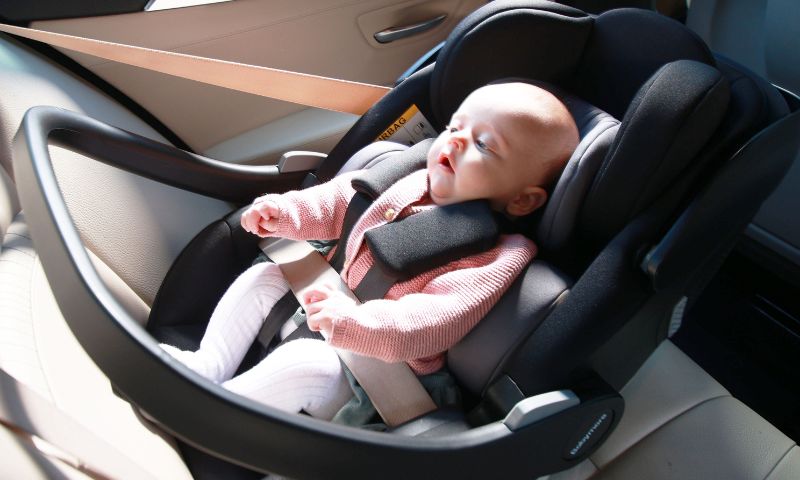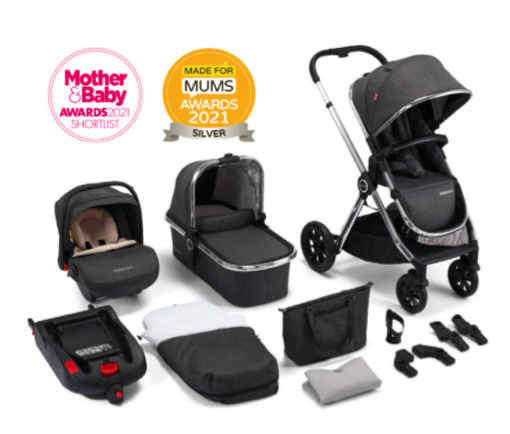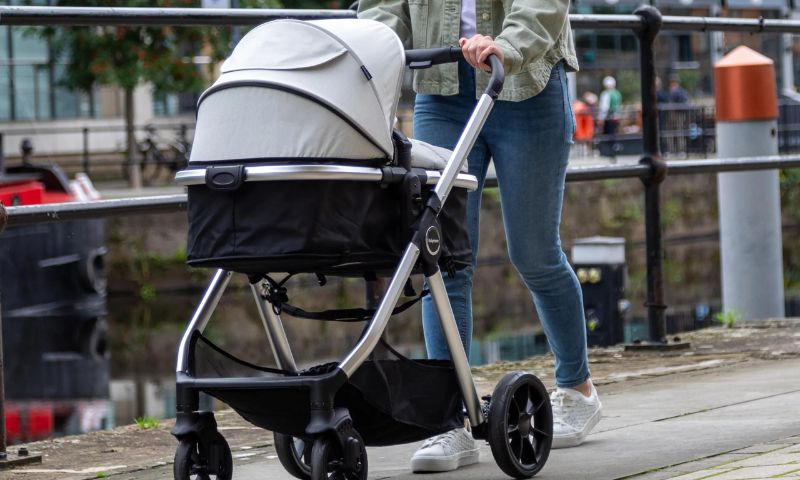i-Size, a new European Union safety regulation (ECE R129) for child car seats, raises the bar for child protection and simplifies life for parents. Introduced in July 2013, this regulation focuses on:
i-Size seats are designed for easier installation.
One of the major benefits of R129/i-Size regulations is a lower risk of incorrectly fitting your child’s car seat. In general, Isofix seats are easier to install than seatbelts.
- Superior Side Impact Protection
i-Size includes stricter side-impact testing to improve collision protection.Child car seats approved under the older R44 regulation are not required to pass a side-impact crash test before being sold.
- Longer Rearward-Facing Travel
i-Size requires children to stay rear-facing for a minimum of 15 months, offering the safest position for young ones. We see more extended rearward-facing car seats approved to R129 regulations that encourage parents to keep their child facing backwards until they’re four years old.
If you are looking for car seats that are durable as well as sturdy, you might want to have a look at Babymore’s car seat collection.
Key Points
1. Compatibility and Transition
i-Size seats operate alongside the existing R44.04 standard, giving parents the flexibility to choose between R44.04 or R129 (i-Size seats). There’s no immediate need to replace your current seats unless you prefer to do so. While future changes may phase out R44 seats in favour of i-Size, parents will still have a transition period to continue using their existing seats.
2. Height-Based Design
Unlike traditional weight-based criteria, i-Size seats are designed based on the child’s height. This makes it easier for parents to assess if the seat is suitable for their child and when to transition to a larger seat.
i-Size baby – 40 cm to 87 cm (0 to around 15 or 18 months)
i-Size baby to toddler – 40 cm to 105 cm (0 months to 4 years)
i-Size toddler to child – 61 cm to 105 cm (12 months to 4 years)
i-Size baby to child – 40 cm to 150 cm (0 months to 12 years)
i-Size child – 100 cm to 150 cm (4 years – 12 years)
3. Extended Rearward-Facing
i-Size mandates rearward-facing travel for infants up to at least 15 months old, providing enhanced protection during early development stages.
4. Side Impact Testing
i-Size includes rigorous side impact testing to ensure optimal protection against side collisions, offering parents added peace of mind.
5. Compatibility and Installation
i-Size seats are compatible with cars featuring Isofix fitting points, but it’s crucial to verify if the seat is approved for your specific car model. Consult your car manufacturer, the child seat manufacturer, or visit Babymore’s website to choose from a variety of car seats, our i-size seats ensuring your child’s absolute safety.
Choosing the Right Car Seat: i-Size vs. Traditional
i-Size: A Newer, Height-Based Approach
i-Size car seats are designed with your child’s safety in mind. This newer system uses a child’s height to determine the best fit, making it simpler for parents to choose the right seat. i-Size also prioritises rear-facing travel for longer, which offers the best protection for young children. Here’s a breakdown of i-Size categories:
- i-Size Baby (Birth to 18 months)
Ideal for newborns, these rear-facing seats keep your baby safe and comfortable.
- i-Size Baby to Toddler (Birth to 4 years)
Offering both rear-facing and forward-facing options, this category accommodates your child’s growth.
Several i-Size categories cover wider age ranges, providing flexibility for various needs.
Traditional Car Seats: Weight-Based System
Traditional car seats rely on weight categories (e.g., Group 0+) to determine fit. While still safe, this system can be confusing, and a child might outgrow a seat before reaching the recommended age for the next group.
Key Differences Between i-Size and Traditional Seats
Let’s explore the key differences between i-Size car seats and traditional car seats:
- Regulation and Safety Standards
- i-Size: Developed under the United Nations Regulation No. 129 (UN R129), i-Size is a newer safety standard that focuses on height-based classification rather than weight. It aims to improve child safety by ensuring better compatibility with car models and promoting rearward-facing travel for longer periods.
- Traditional Car Seats: Traditional car seats are based on weight categories (e.g., Group 0, Group 1, etc.). These seats have been in use for many years and follow older safety standards.
- Age and Size Range
- i-Size: i-Size seats cover a broader age range, from birth up to 12 years. They are categorised based on height, accommodating children of varying sizes.
- Traditional Car Seats: Traditional seats are grouped by weight, which may not always align perfectly with a child’s developmental stage. For example, a child may outgrow a weight-based seat before reaching the recommended age for transitioning to the next group.
- Rearward-Facing Travel
- i-Size: i-Size seats prioritise rearward-facing travel for as long as possible. Research shows that rear-facing seats offer better protection for young children, especially in frontal collisions.
- Traditional Car Seats: While some traditional seats allow rearward-facing travel, it’s not consistently emphasised across all weight-based categories.
- ISOFIX Compatibility:
- i-Size: All i-Size seats are compatible with ISOFIX systems, which provide secure attachment directly to the car’s chassis. This ensures better safety and ease of installation.
- Traditional Car Seats: Traditional seats may or may not be ISOFIX-compatible. Some models require seat belts for installation.
- Side Impact Protection
- i-Size: i-Size seats often incorporate additional features for side impact protection, such as deeper side wings and energy-absorbing materials.
- Traditional Car Seats: Side impact protection varies across different traditional seat models.
- Labelling and Certification
- i-Size: i-Size seats carry an orange label with an “E” mark and an “R129” approval code.
- Traditional Car Seats: Traditional seats have labels indicating their weight group (e.g., Group 0+, Group 1, etc.) and may bear the “E” mark.
- Transitioning Between Groups
- i-Size: Transitioning between i-Size groups is based on height milestones, making it easier for parents to choose the right seat as their child grows.
- Traditional Car Seats: Transitioning between weight-based groups can be less straightforward, as it depends on both weight and age.
Choosing the Right Seat for You
Both i-Size and traditional car seats meet safety standards. Consider these factors when choosing:
- Your Child’s Age and Height
Ensure the seat accommodates your child’s current size and allows for future growth.
Check if your car has ISOFIX anchor points for easier installation.
Consider features like ease of use and comfort padding.
Remember, always follow the manufacturer’s instructions and ensure proper installation for optimal safety. You might want to check out our blog related to car seat regulations in the UK here.
Babymore i-Size Car Seats
When it comes to your child’s safety, Babymore’s i-Size car seats are the perfect choice. Exceeding the latest EU safety standards, these seats provide superior protection for your little one on every trip. Rigorous side-impact testing and extended rear-facing positioning ensure maximum safety.
The height-based design makes choosing the right seat simple, and Isofix compatibility allows for effortless installation. Offering both comfort and peace of mind, Babymore’s i-Size car seats come in a variety of models, including Macadamia, Pecan, Kola, and Coco. Upgrade to a Babymore i-Size car seat today and experience a safer and more comfortable journey for your child.













